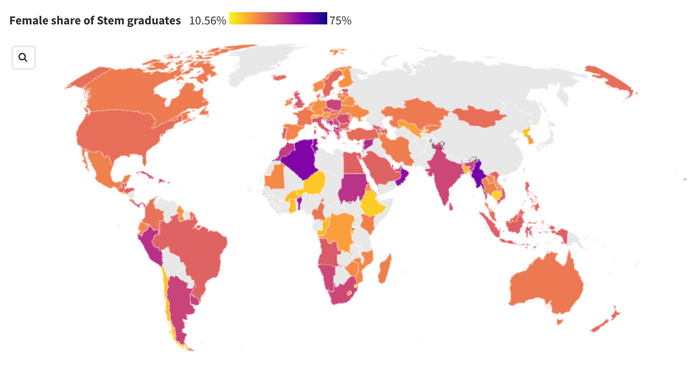Good morning, this is Michelle. Last week, the international day of girls in information, communications and tech went by, drawing limited attention. Despite efforts, women are still a minority in science and tech studies in many countries.
Surprisingly, the gender gap is largest in several of the wealthiest countries, while some developing nations are ahead of the curb. |

|

Source: World Bank • Geneva Solutions/Michelle Langrand
|
|
From the classroom to the workplace, girls and women remain under-represented in science, technology, engineering and maths (Stem). While young women outnumber their male counterparts at universities, they make up only 35 per cent of Stem students globally. Post-graduation, the problem goes from bad to worse: worldwide, women hold less than 20 per cent of jobs in science and engineering.
But some countries are bucking that global trend. Take Tunisia. According to the World Bank, 55 per cent of Stem graduates in the north African country are women, compared to 22 per cent in Switzerland and 31 per cent globally. Over in Malaysia, the information and communications technology (ICT) sector employs almost the same number of women as it does men.
It has left researchers scratching their heads and wondering: what are these countries doing differently? And most importantly, what can others learn from them?
Read the full story on Geneva Solutions
|
|
Here's what else is happening
|
|
GS news is a new media project covering the world of international cooperation and development. Don’t hesitate to forward our newsletter!
Have a good day!
|

|
|
Avenue du Bouchet 2
1209 Genève
Suisse
|
|
|
|








